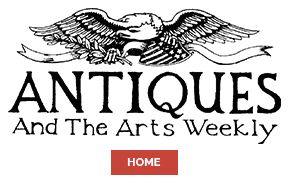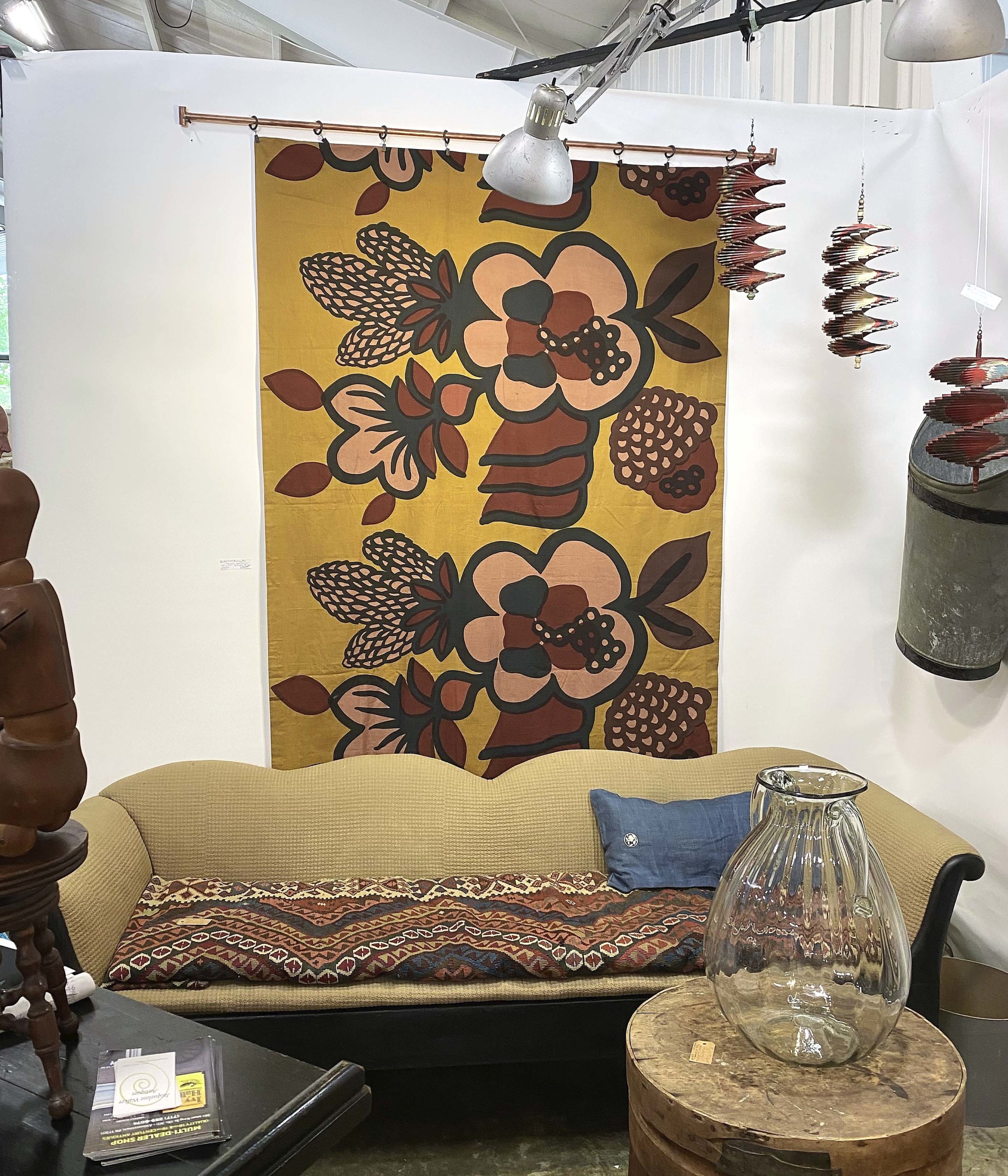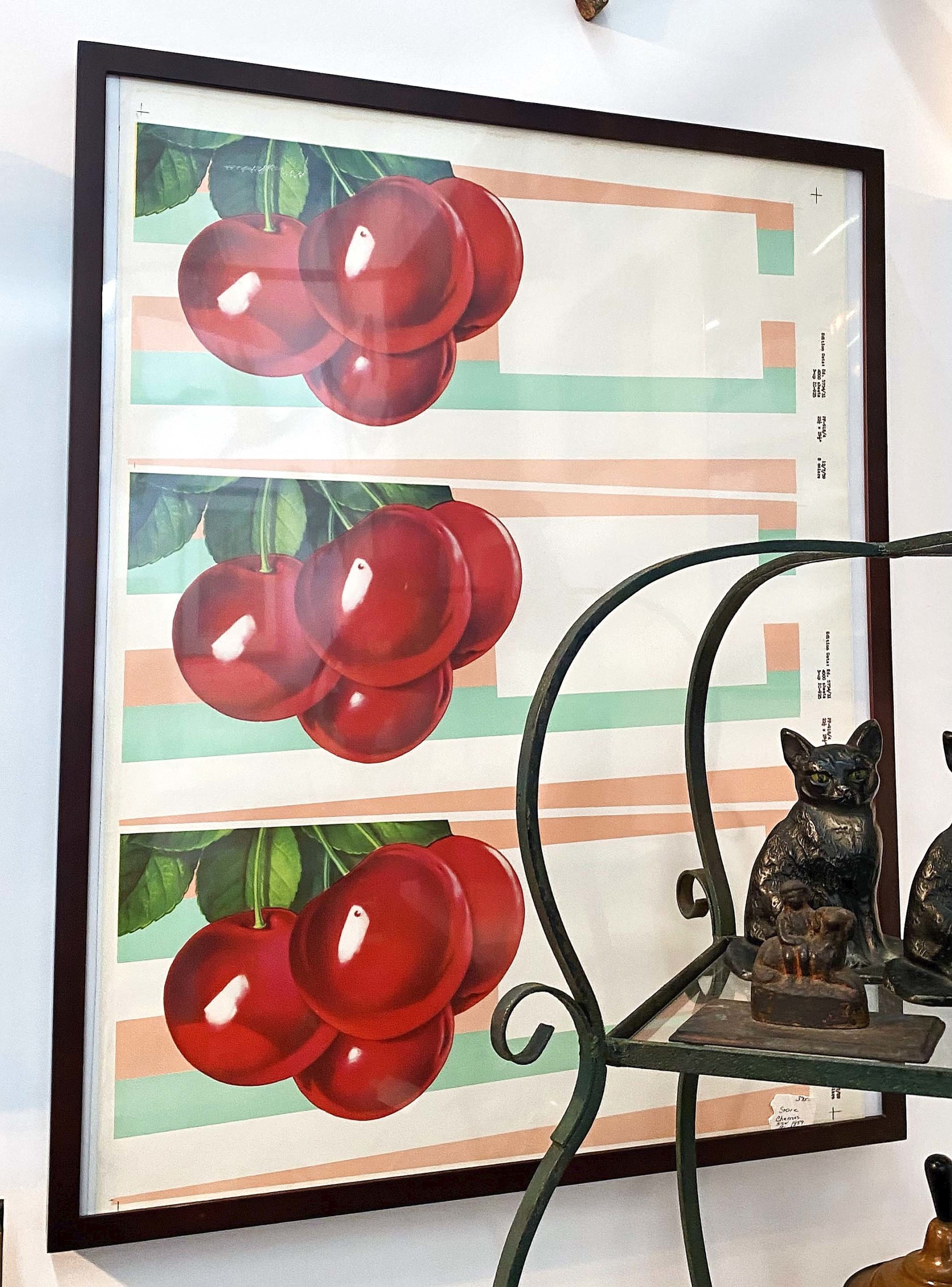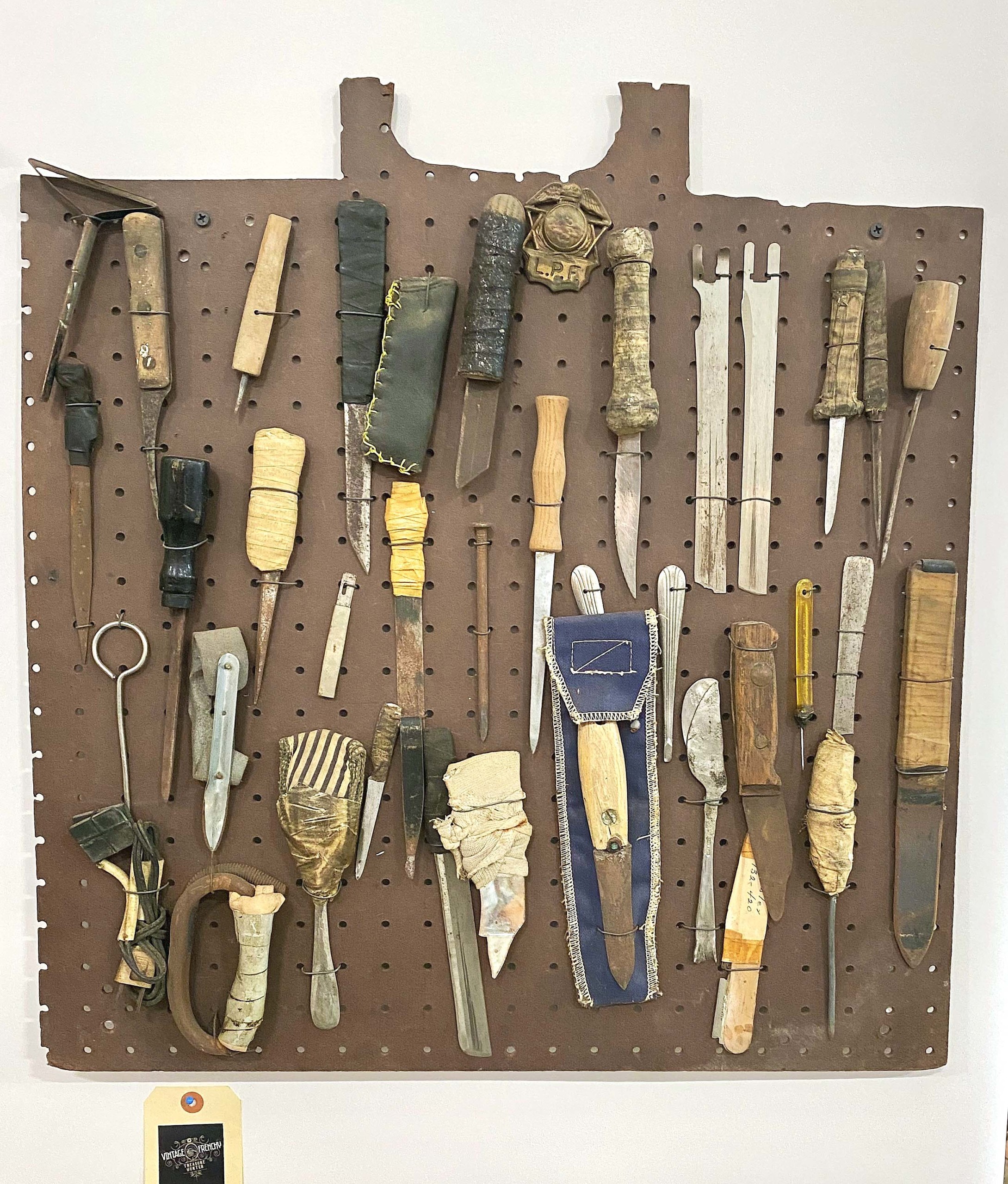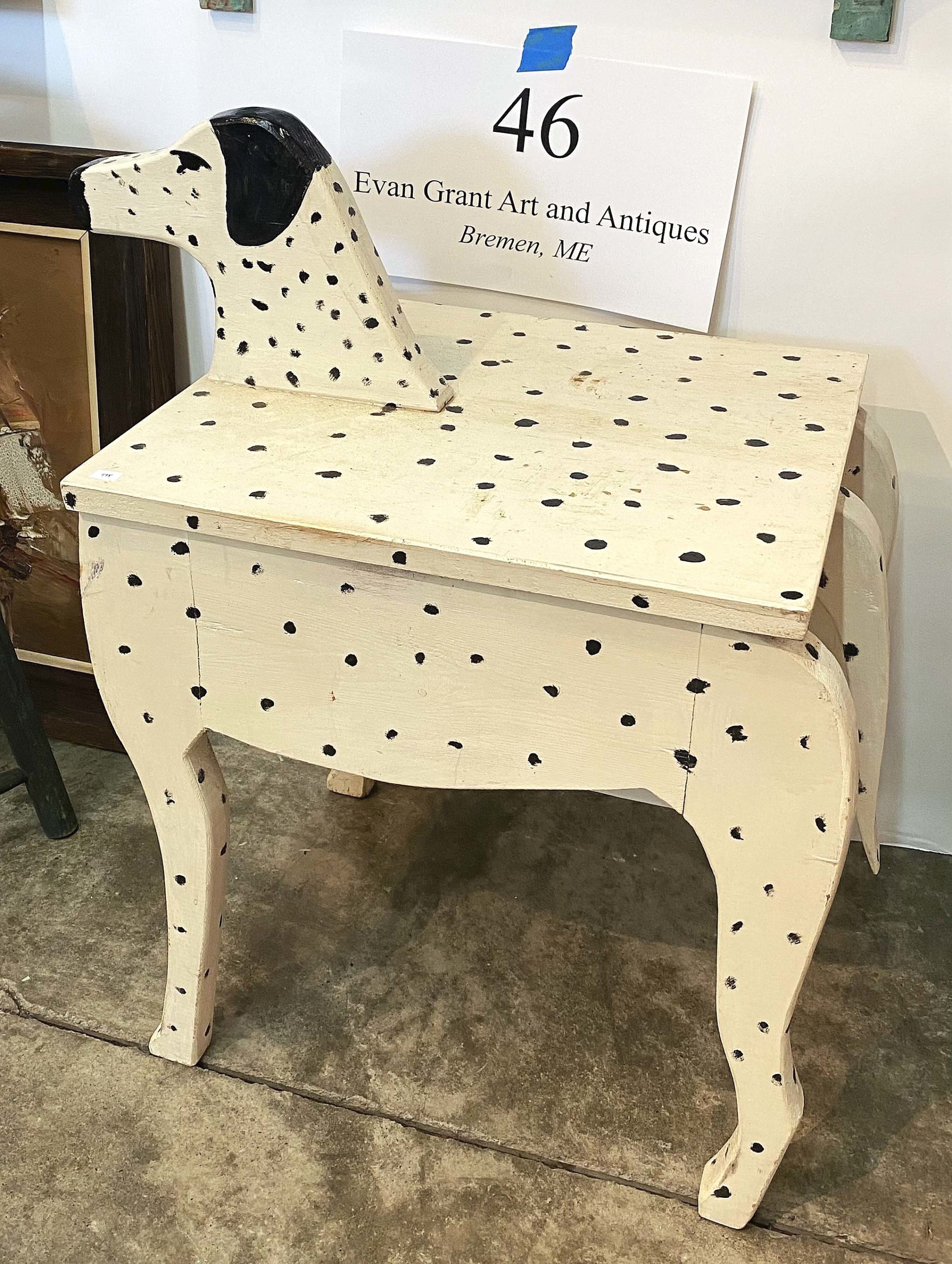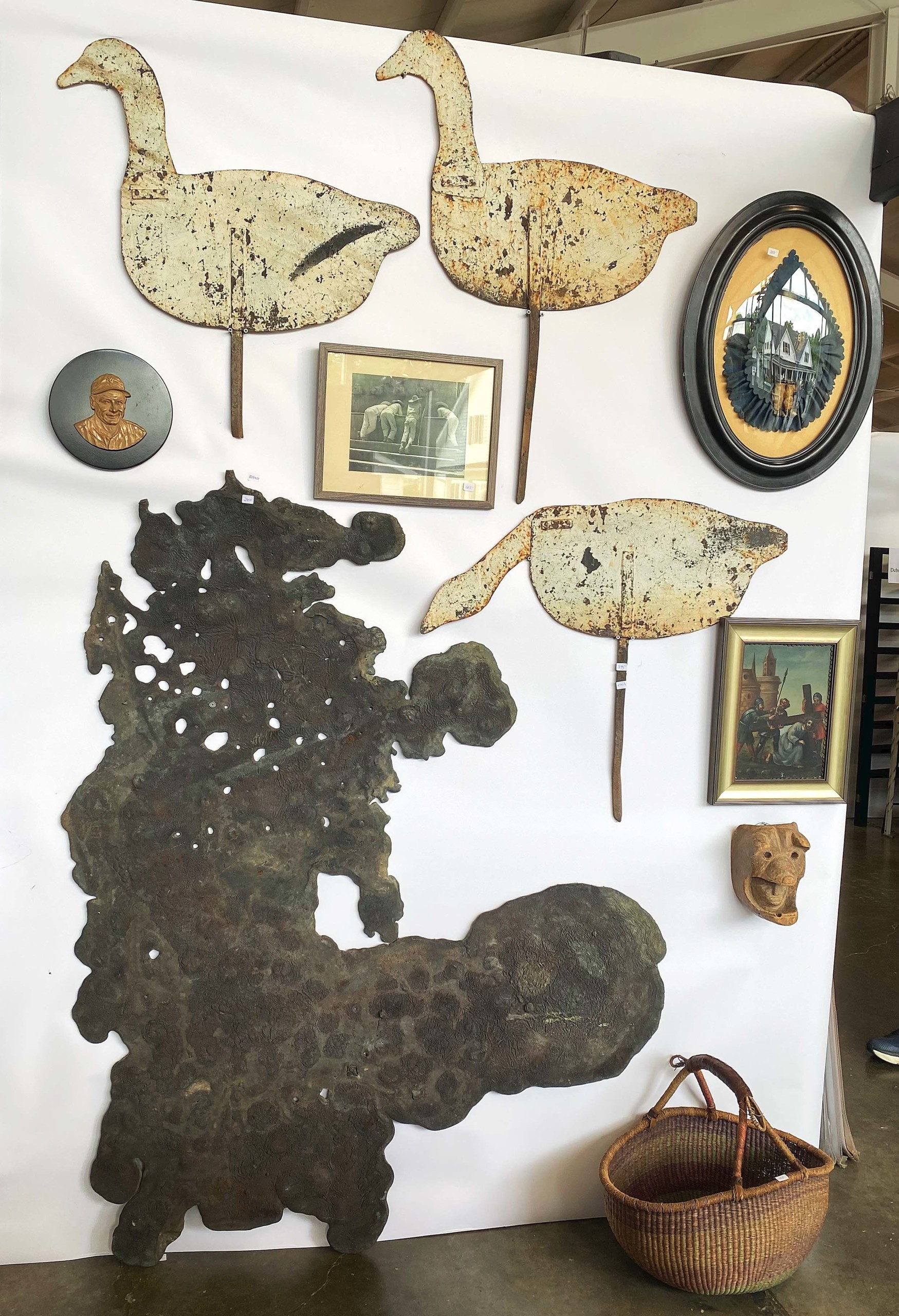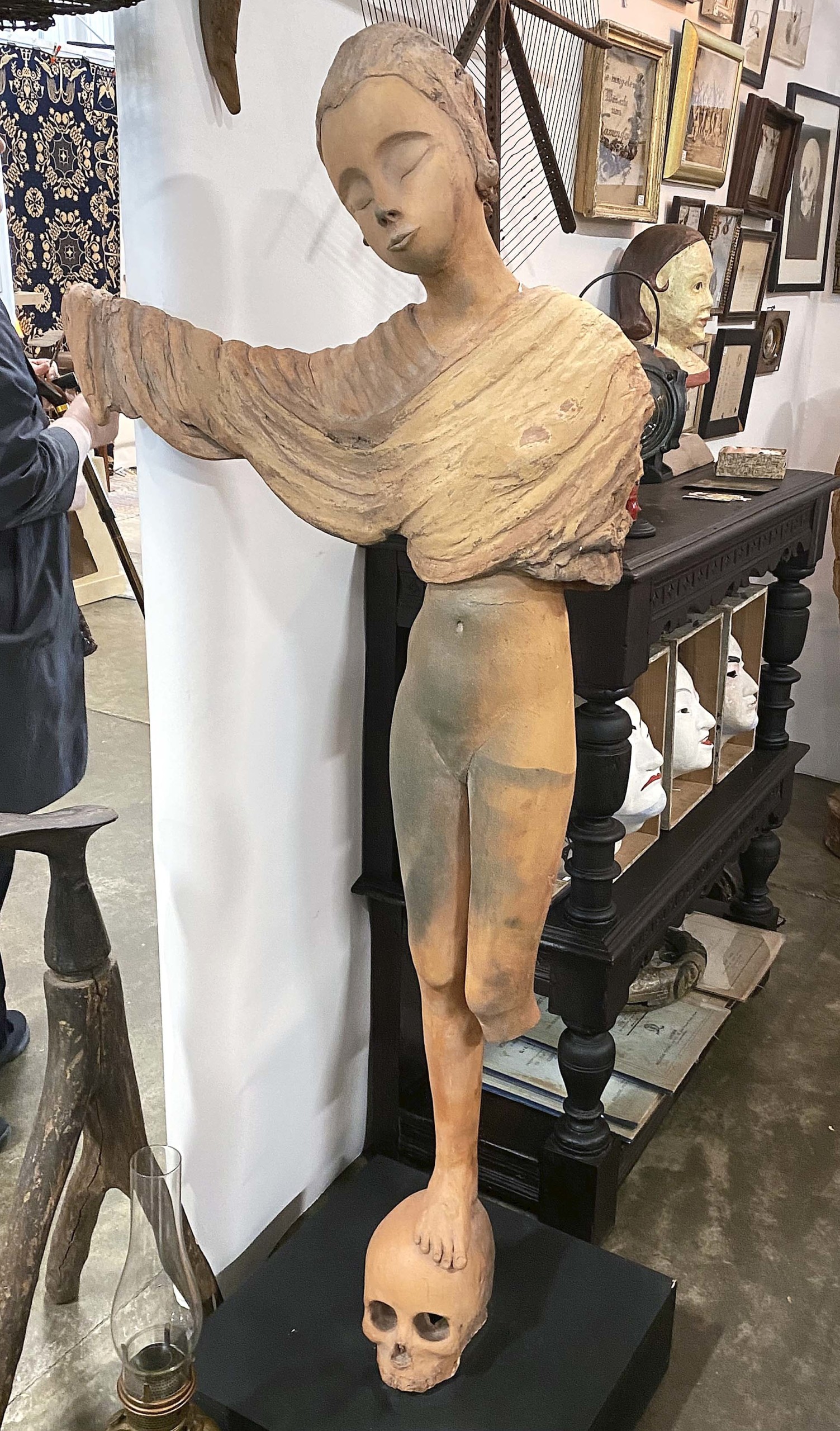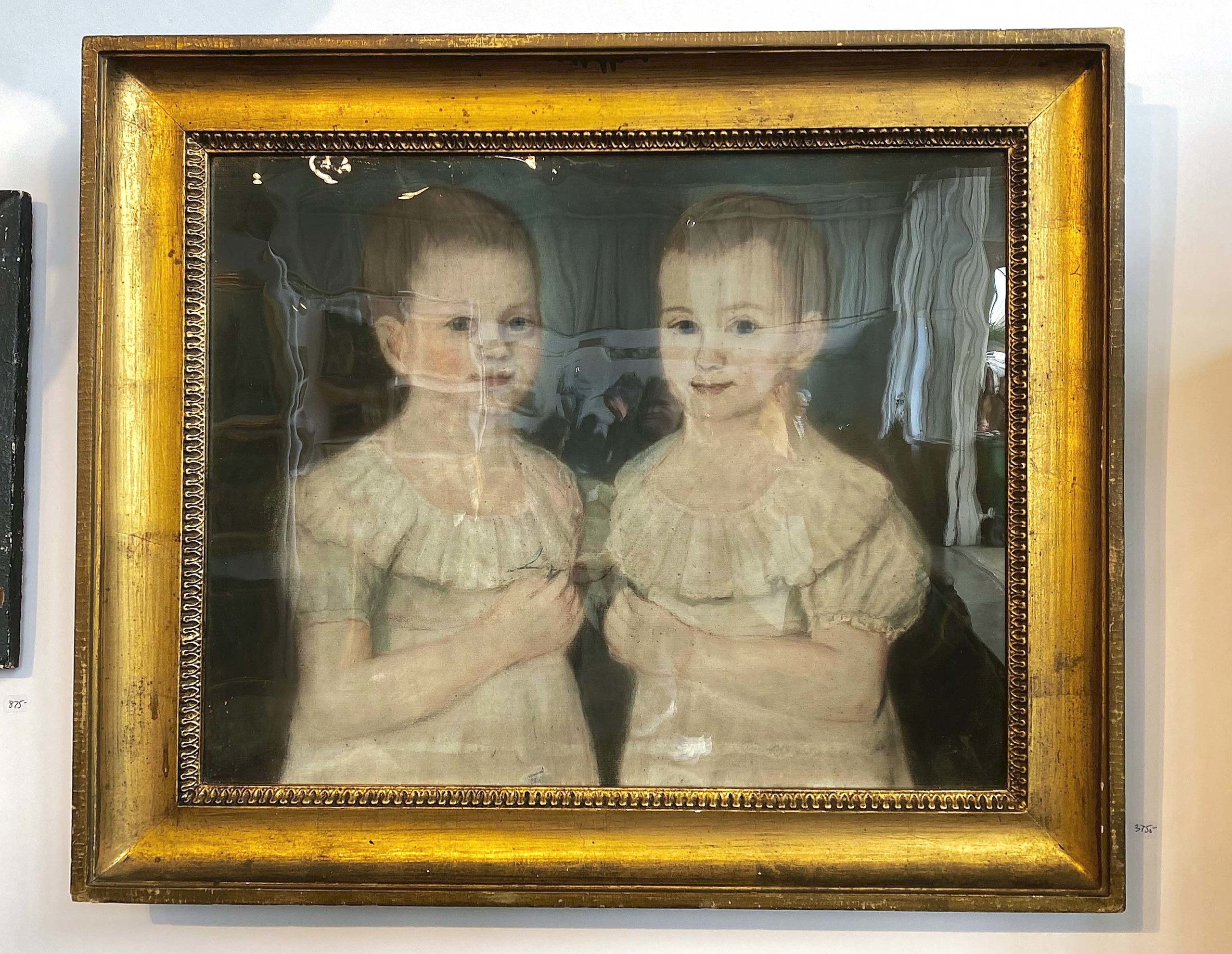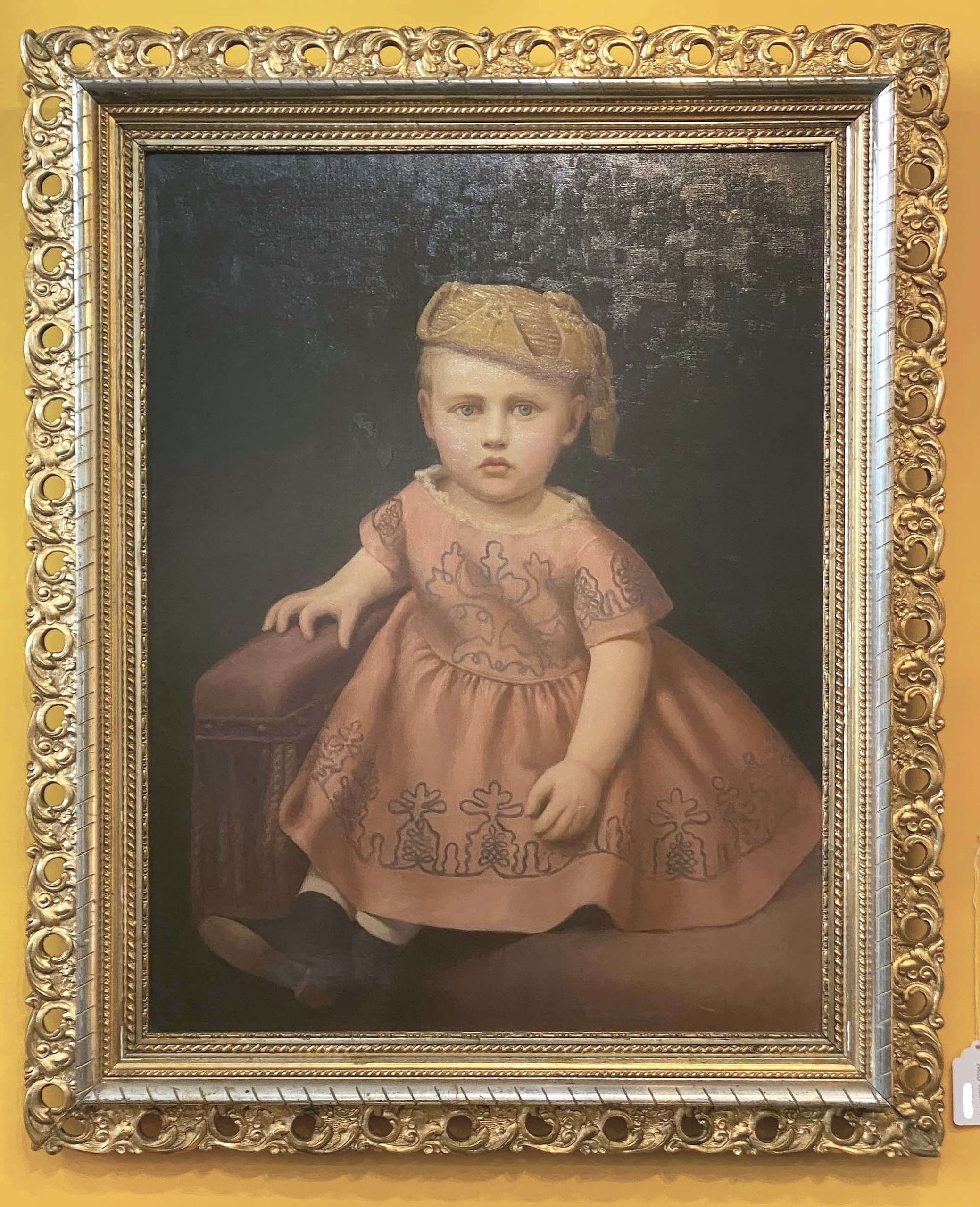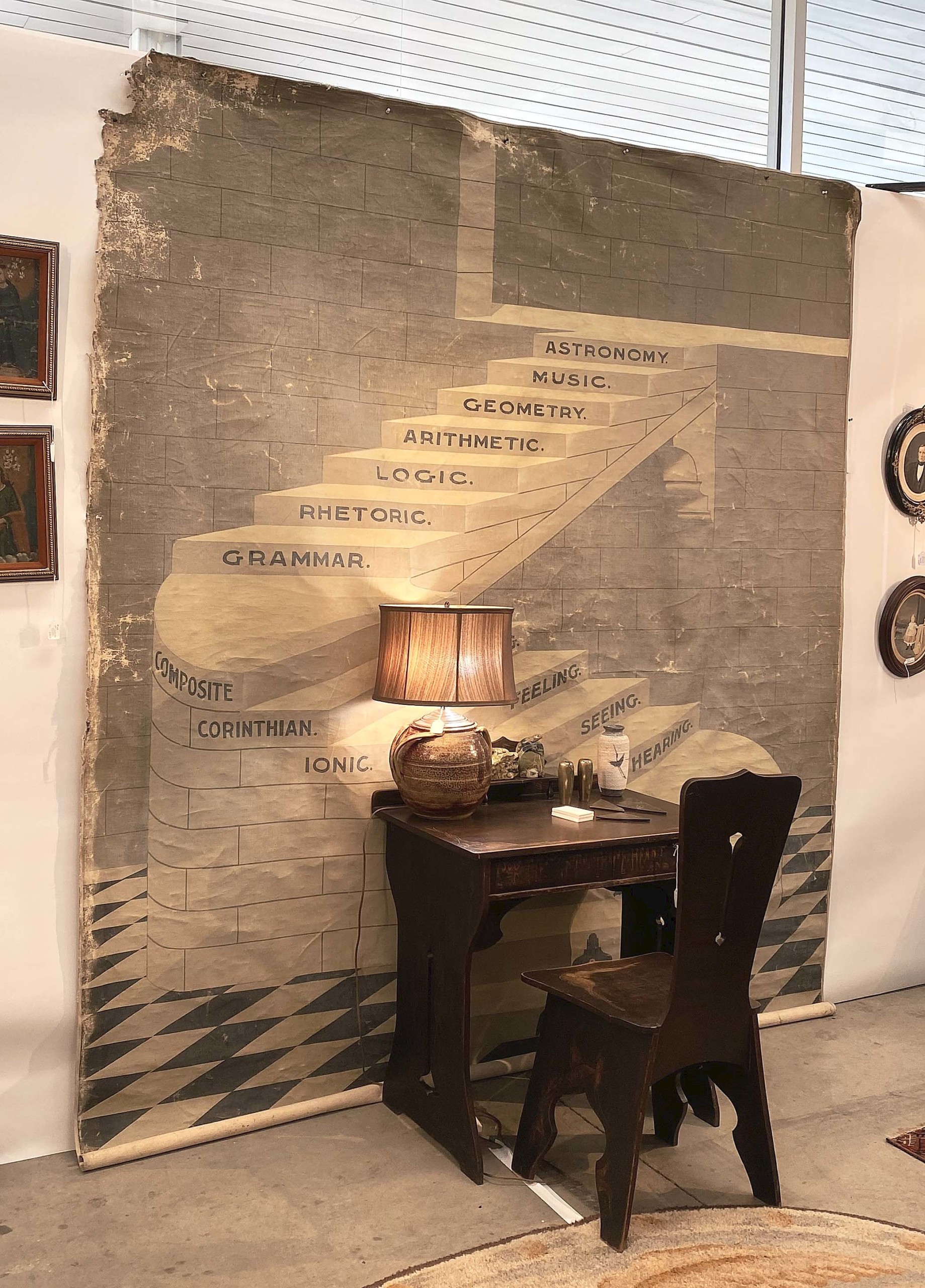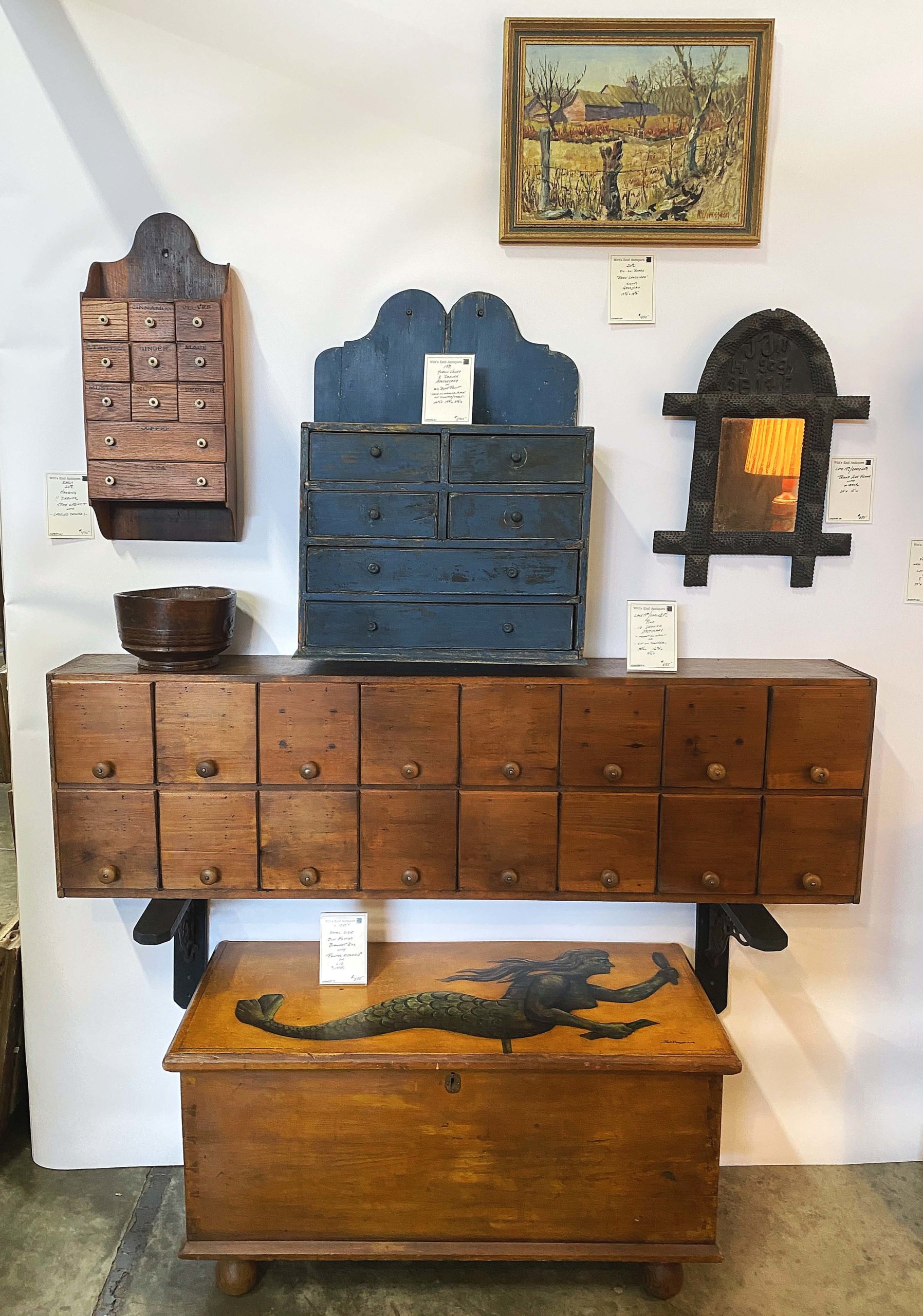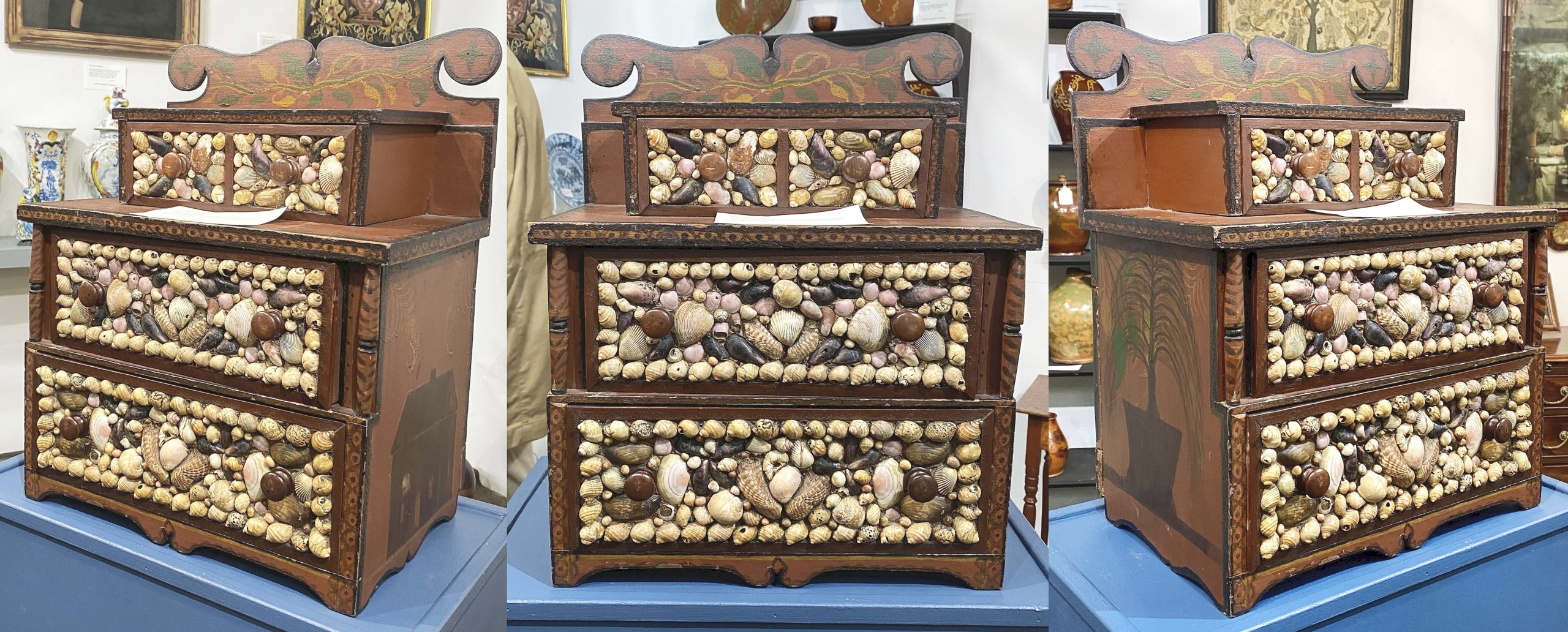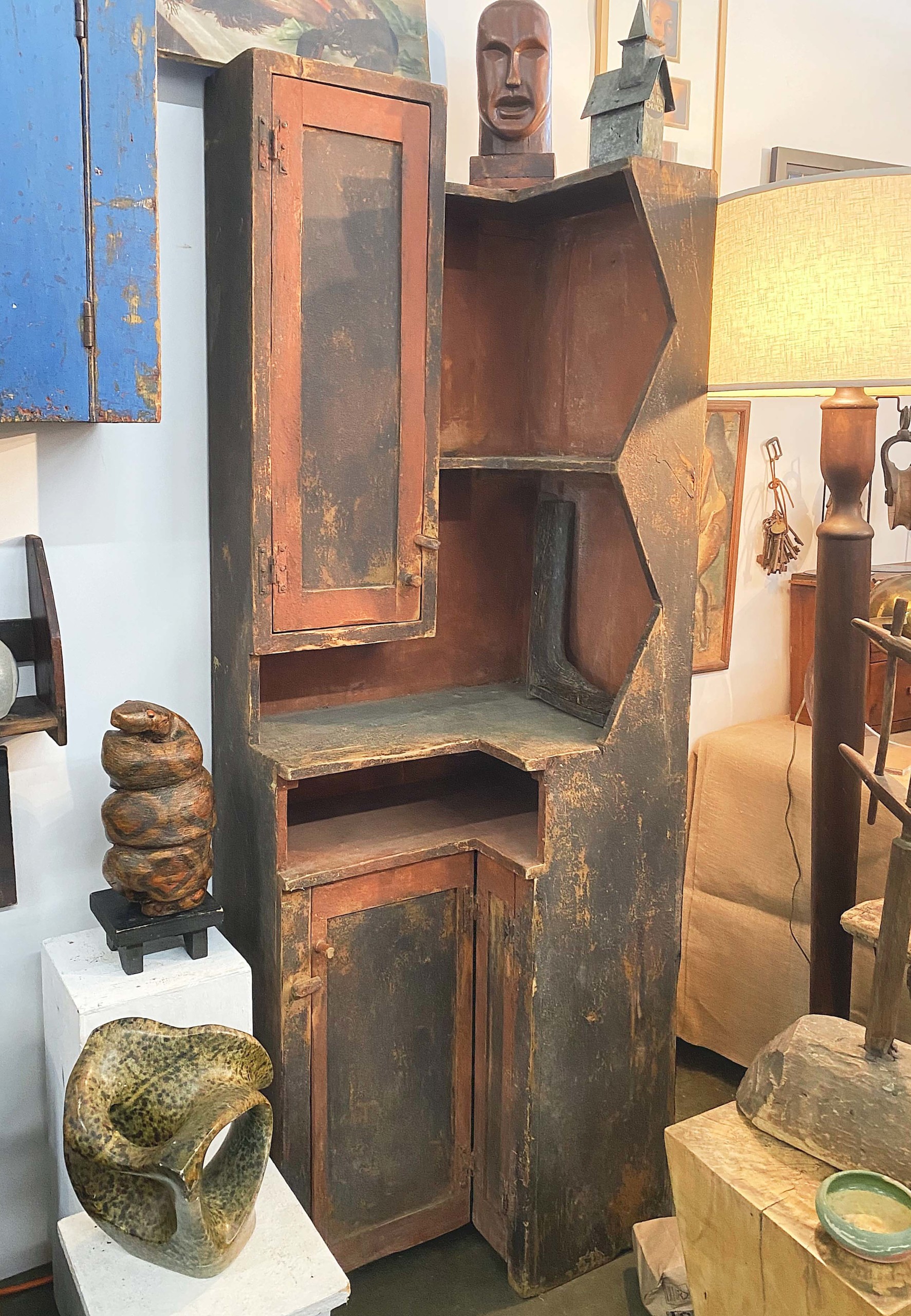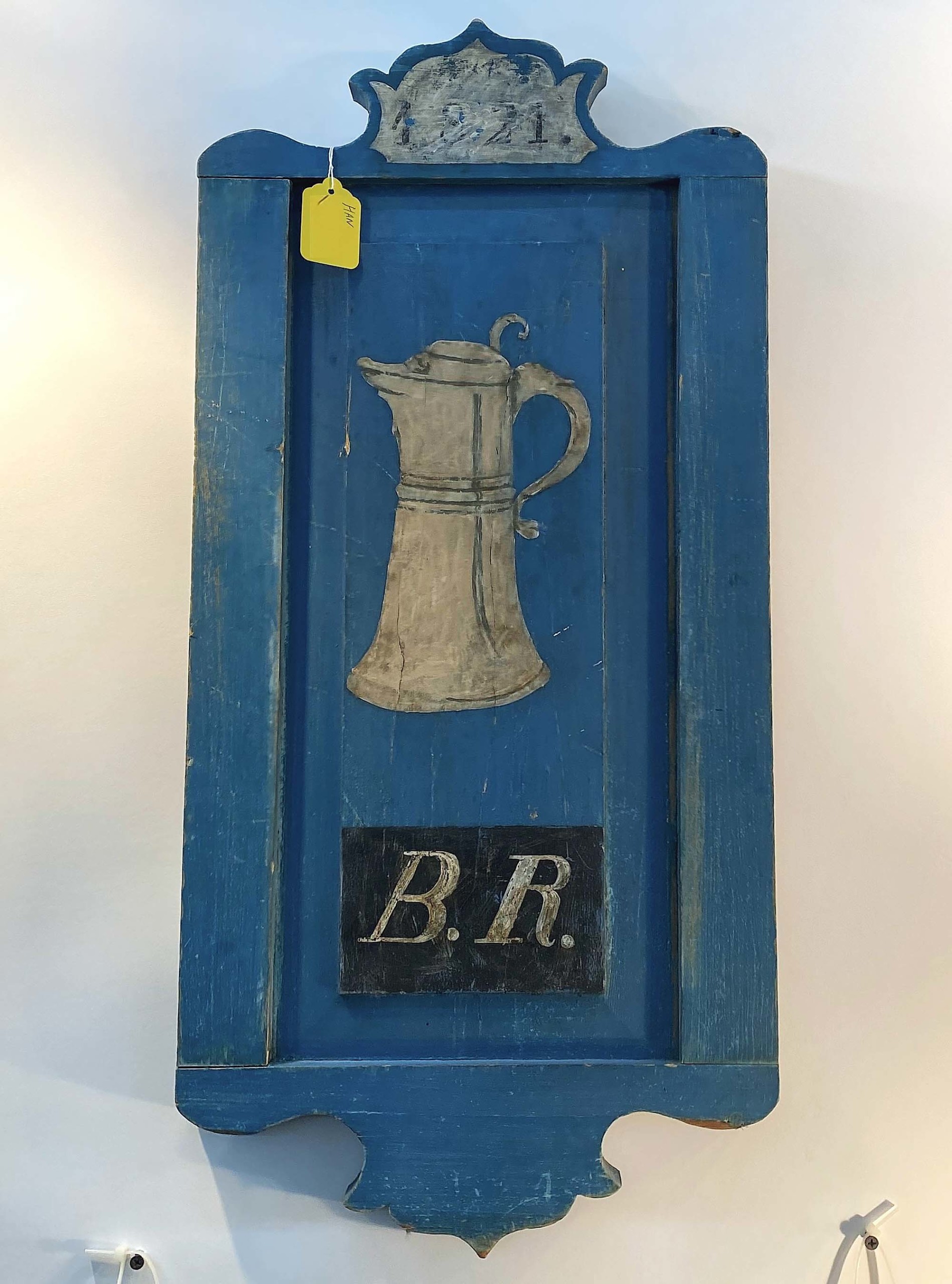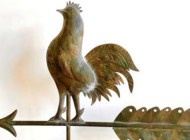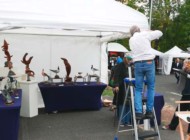
Ball & Claw, Port Ewen, N.Y., recreated a parlor in the style of its shop, located in a 1920s Dutch colonial revival house that also includes a café.
Review & Onsite Photos by Z.G. Burnett
RHINEBECK, N.Y. — There are two unofficial starts to the Northeast “antiquing” season: the Brimfield Antique Market week and Spring Antiques at Rhinebeck, which is presented by Barn Star Productions and Frank Gaglio. For dealers and collectors alike, Memorial Day weekend was booked. In Rhinebeck on May 24 and 25, three buildings containing 125 businesses welcomed crowds of eager shoppers between sunny spots and rain showers. Like the weather, one never knows what will turn up at Rhinebeck, bringing more attendants each season. “Our gate was up over 35 percent over last year, giving us the largest two day attendance over previous shows,” Gaglio told us. “Exhibitors reported significant sales on both days with Sunday being especially strong.”
Traditionally home to Americana dealers, Rhinebeck offers a varied selection of goods and dealers specializing in nearly all areas of antiques and design. Both they and their clientele are leaning younger than in previous years, some customers even shy of driving age. Social media plays no small part in newer generations’ ability to bring in local business that may otherwise not even know about the event. The numbers show that interest in vintage and antiques grows with each season as a result. Many such “influencers,” families and even actor Paul Rudd and star designer, John Derian, were spotted buying and selling over the weekend.
Presentation is an important factor in this success, and some Rhinebeck vendors spend weeks planning their spaces before the show. This was especially evident in booths like that of first-timer Ball & Claw from Port Ewen, N.Y., which was decorated as an entire parlor space. Their range of pricing from smalls to heavy furniture exemplified one more reason why Rhinebeck is attracting younger visitors. Each dealer brings their very best, with appropriate, but not inaccessible, prices for emerging to advanced collectors. Ball & Claw also mixed eras of antiques, more like how a buyer might arrange their own collection. “We had such a great show,” said Maria Philippis of Ball & Claw. “The response to our display was so positive and we sold a lot… I think it helped get our name out there a bit.”
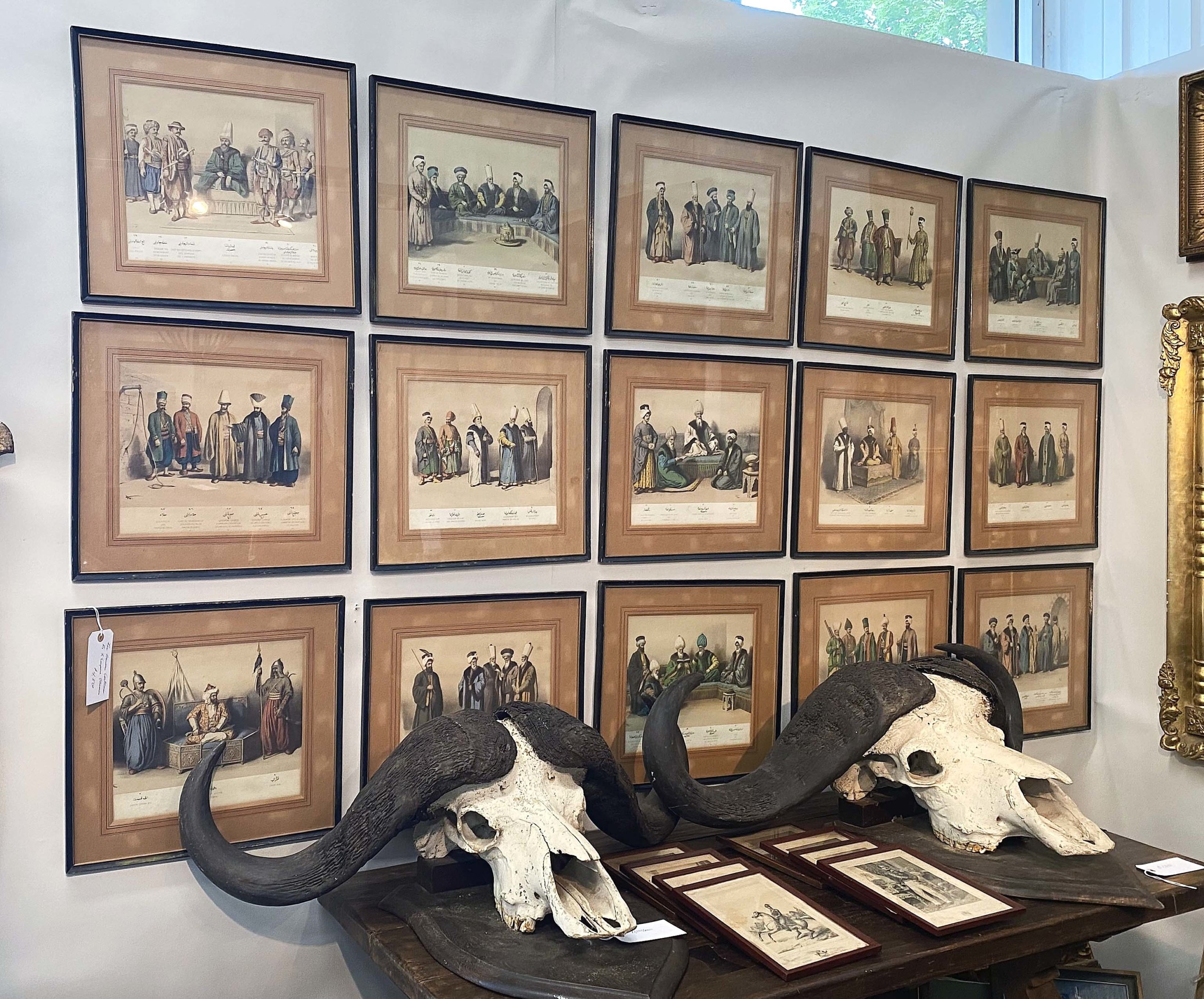
A complete set of lithographs from Les anciens costumes de l’Empire Ottoman, by Muchir Arif Pacha, circa 1864, presented by Christopher Cawley, New York City.
Christopher Cawley of New York City recreated a British or Continental country house with an array of antiques from those shores. An entire wall of his booth was covered with a complete set of lithographs from Les anciens costumes de l’Empire Ottoman, compiled by Muchir Arif Pacha (1807- ), illustrated by “M. Julien” and published in French and Turkish editions by Lemercier circa 1864. From a Washington, DC, collection, these brightly-colored lithographs showed both Roman and Arabic alphabets. “Finding all 16 of these together is rare,” Cawley explained. “When framed, they’re usually split up and sold separately.” The set was still available at press time.
This is not to say that European art was scarce at Rhinebeck. One shining representative was a cast bronze boar with a high polish gold surface, reclining on a plinth carved from heavy black stone and offered by Seaver & McLellan, Jaffrey, N.H. The boar was cast circa 1870 by Jean-Jacques Ducel (1801-1877) after an ancient sculpture in the Uffizi collection and sold as a Grand Tour souvenir. The Uffizi’s 1556 marble boar was found on Rome’s Esquiline Hill and initially believed to be Greek due to its high degree of realism; it is, in fact, a Second to First Century BCE copy of an original Hellenstic bronze (300-200 BCE), now lost. Another Seventeenth Century scale bronze copy by Pietro Tacca (1577-1640) is housed in the Museo Stefano Bardini, Florence.
A pair of objects meant to be together forever was posted on pedestals by More & More Antiques, New York City. Made from burlap and gesso, two elaborately detailed busts of an Eighteenth Century lady and gentleman were wonderful to behold and stunning to view up close. They might have been crafted for a shop display in the 1950s or 1960s, but otherwise not much was known about the busts except that their creator was an expert fiber artist.
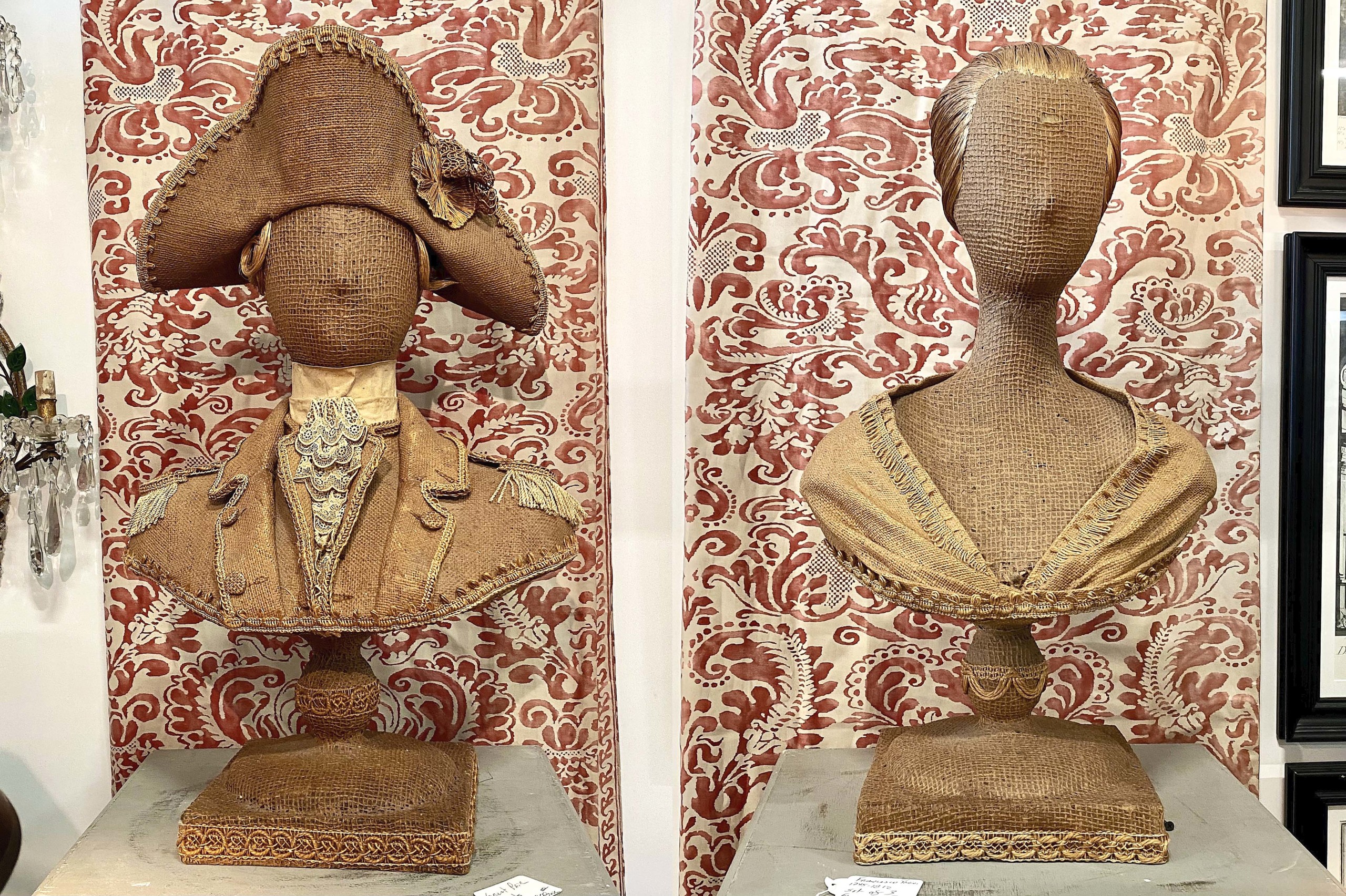
Pair of midcentury busts made with burlap and gesso by an anonymous craftsman, More & More Antiques, New York City.
Derek Poole of Poole Art & Design, Rochester, N.Y., shared a piece of anonymous, exquisite material culture, a rare, beaded velvet tea cozy from the Iroquois of the Niagara Falls area. The Iroquois Confederacy of this region is also called Haudenosaunee, and consists of six indigenous nations: the Mohawk, the Oneida, the Onondaga, the Cayuga, the Seneca and the Tuscarora. The Erie Canal opened in 1820, bringing more and more visitors to their ancestral lands and fostering a booming tourist trade. By the time this tea cozy was made around 1880, such goods were being made and sold by mostly female artisans for domestic and overseas customers.
Like beading and embroidery, shell art was once dismissed as a pastime and/or “women’s work,” and therefore not considered “high art.” Luckily, this view grows increasingly obsolete with every passing year, and Samuel Herrup Antiques of Sheffield, Mass., put the spotlight on a tabletop chest that proved the form’s worth. Delightfully decorated from all sides, the chest’s first noticeable features were the shells applied to its drawer fronts, and the bottom two showed intricate symmetrical designs. It was made in Maine circa 1870, so the shells probably came from those shores. Looking closer, the front and side edge surfaces were delicately decorated with black paint, and the scalloped backsplash with green and yellow leaves. On either side of the chest, there was a potted tree and a homestead, both framed with yellow ferns. Though not decorated professionally, the chest was nonetheless a work of great creativity and artistry.
Quilts of all ages and patterns are antiques show mainstays, but Hattie Maude Vintage, Brooklyn, N.Y., presented a 1920s “Prairie Point” or “eyelash” quilt from the American South and business owner Angela Howard’s personal collection. “It’s super rare, you usually only see pillows [with this technique],” Howard said, adding that her mother purchased the quilt in Washington, DC, in 1982, and it was fresh to the market. Made between the 1900s and 1930s, many of the materials came from companies that sold goods such as coffee, sugar and flour in plain canvas cotton bags that were used to make hardworking household linens. An innovative merchant of such materials decided to set itself apart with printed cotton bags and were wildly successful because women made house dresses with the leftover fabric. “I actually have seen house dresses made in a few of these prints,” shared Howard. “These quilts were literally made from the tiny scraps left over from these other clothing projects.” With one seamstress, it would take years of fragment collecting to make a blanket of this size.
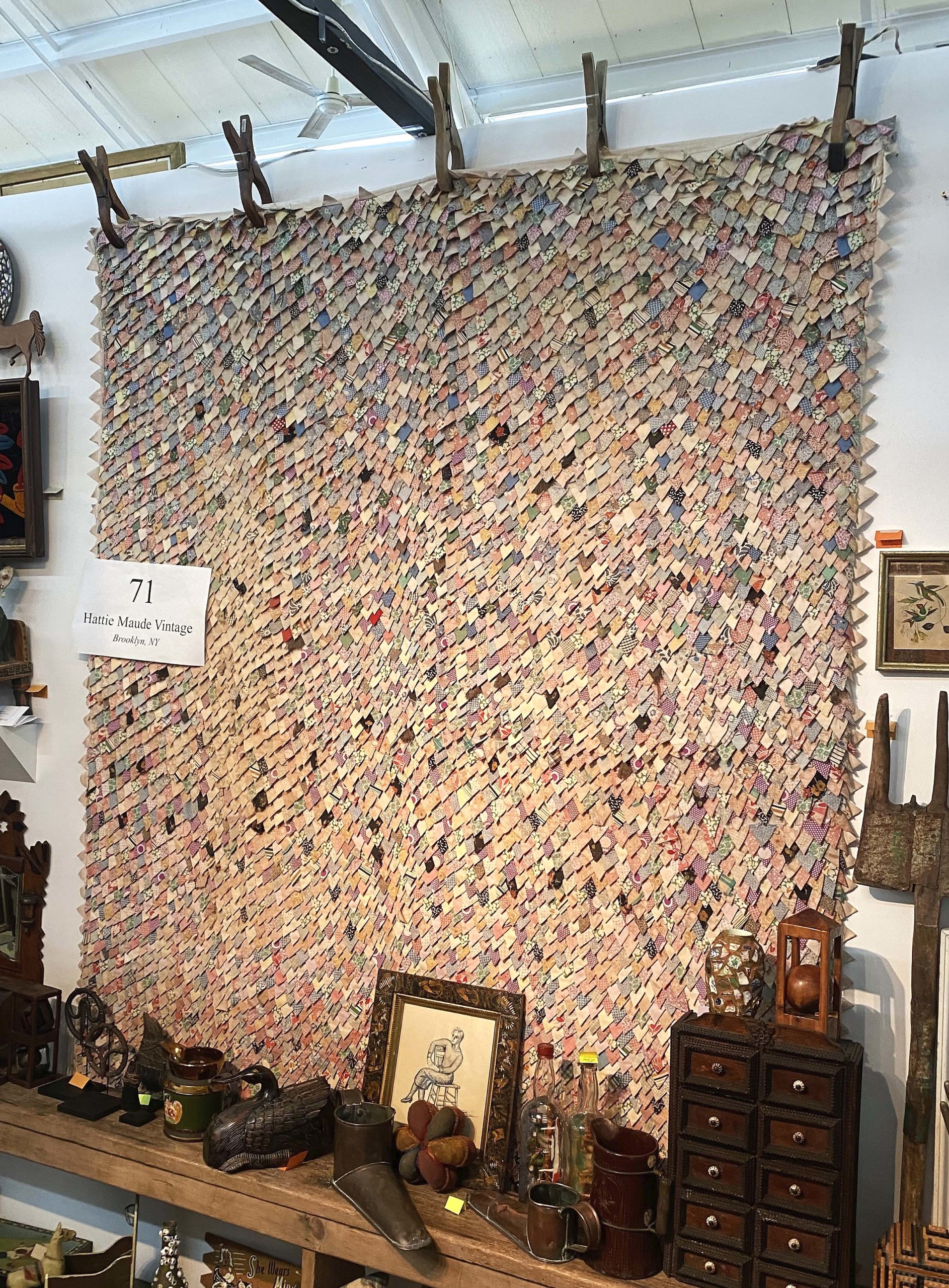
“Eyelash” or “prairie point” quilts are unique to the American South, and this example was in the family collection of Angela Howard, owner of Hattie Maude Vintage, Brooklyn, N.Y., for more than 40 years.
Hooked rugs have been regaining popularity of late, and those with animal motifs were especially prevalent and desirable among collectors. American Spirit Antiques, Shawnee Mission, Kans., displayed a rug showing two white rabbits on a blue field, surrounded by a two-row frame of multicolored blocks. Dated to circa 1935 and made with cotton on burlap, the playful colors were still vibrant. On the opposite side of the booth was a swell body copper weathervane of a fox in “as found” condition. Probably made from a mold by E.G. Washburne & Company, N.Y., it would be a later form from 1920 to 1940.
Other folk art at Rhinebeck was more abstract, like the sizable “puddle bronze” hung on the wall of Deep River Antiques, Centerbrook, Conn. Named so because they are made by pouring excess bronze on the floor and allowing it to harden, puddle bronzes are much like clouds; different people always see different shapes or images in their abstract masses. Deep Rivers’ bronze was found in Hudson, N.Y., and was displayed surrounded by Twentieth Century decoys of snow geese.
Freemason and Odd Fellows-related antiques have grown in popularity over the past few years due to their enigmatic symbolism and sometimes downright creepy imagery. Thomas Luciano of Time and Materials Antiques, Hudson, N.Y., hung a painted canvas in his booth that was even more enigmatic to the uninitiated. Erected in an empty hall with a checkerboard floor, a staircase with words painted on each step leads to another open but identical space. The senses, architectural styles and subjects emphasized by Freemasons become more complex as one climbs the stairs. Found in central New York, the canvas was painted circa 1900 and was still in very good condition. The table and chair in front were also of note, still together after more than a century. Also found in New York state, both showed Art Nouveau and Arts and Crafts elements. Carved lettering on the desk’s front surface quoted Sir Philip Sidney (1554-1586), “Look thee into thine heart and write.”
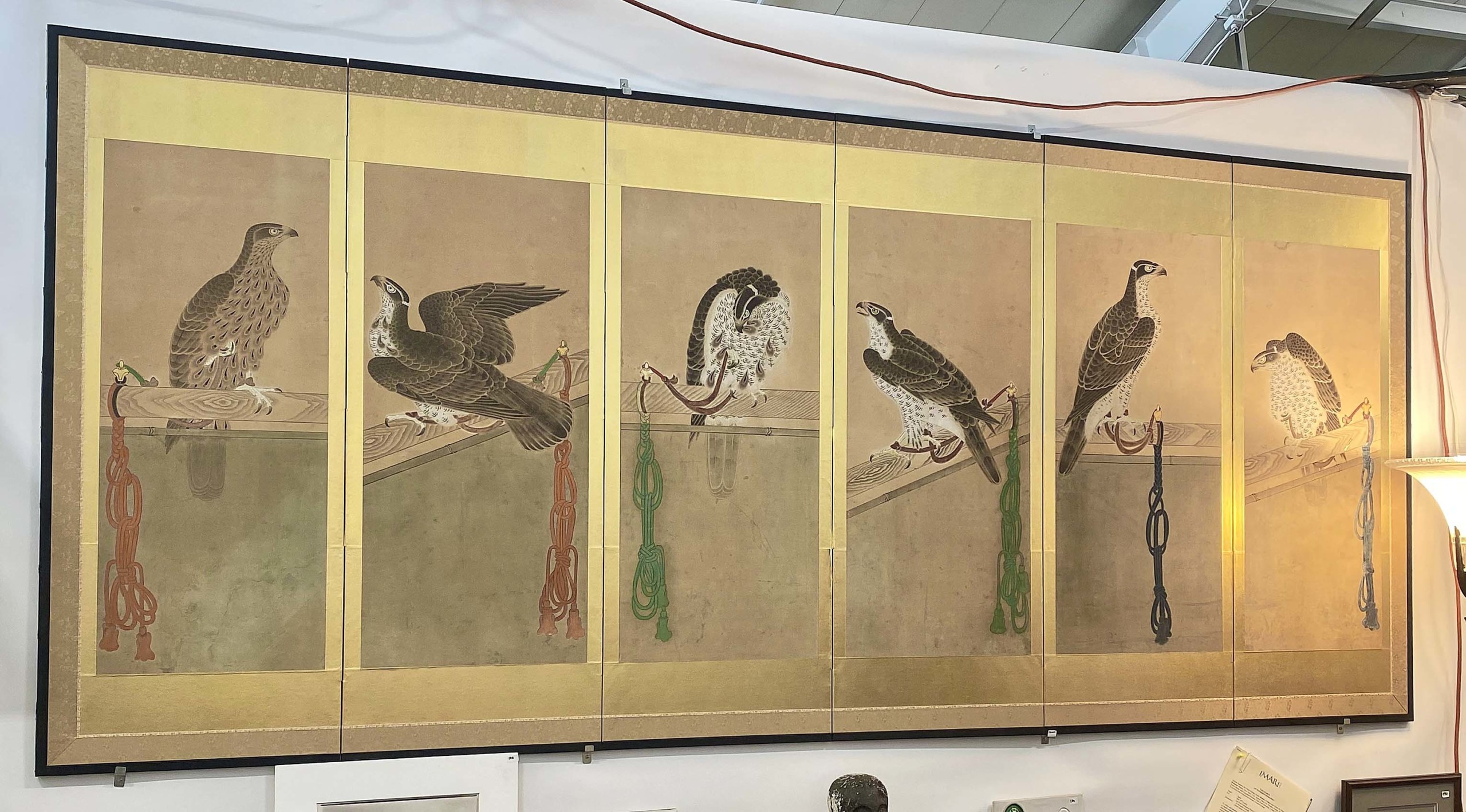
This mounted Nineteenth Century Japanese folding screen was striking as its birds of prey were about life sized and lifelike. Stone Block Antiques, Vergennes, Vt.
Asian art is a sizeable category at Rhinebeck, as well. Stone Block Antiques, Vergennes, Vt., mounted a six-panel Japanese folding screen, or byobu, showing six prized falcons. Each was likely once a living bird belonging to an elite samurai family in the late Edo period (1853-67), each identified by its intricately knotted tether. With their noble bearing and fierceness in hunting, the birds represented treasured values in this strictly hierarchical society. The screen was silk brocade stretched over a lacquered wood frame, with a gold fleck base supporting the ink and pigment paintings on paper. Falcon portraits have also been found in scroll format. The screen was sourced in San Francisco.
Those fonder of figurative art were also well served. Heller Washam Antiques, Portland, Maine, displayed a Nineteenth Century full-length portrait of a girl against a rural background. The subject was from a wealthy family, dressed in fine blue fabric, wearing rings and a curious pocket watch necklace that may or may not indicate this as a postmortem image. The book in her hand indicates education and/or piety, as exemplified by the crisp white handkerchief she holds. From the American school, the portrait was painted in oil on blue and white striped ticking that ghosted through the surface and was in overall fine condition.
Mario Pollo Antiques, Holliston, Mass., brought a double half-length portrait that may have collectors looking twice at other “American school” works of art. The two children, if not siblings then close cousins, dressed in matching white frocks are familiar to many Americana admirers, but don’t be fooled. “It’s French,” Pollo confirmed of the pastel. “They’re almost always French.” The portrait was executed in the late Eighteenth Century and retained its original frame, glass and all.
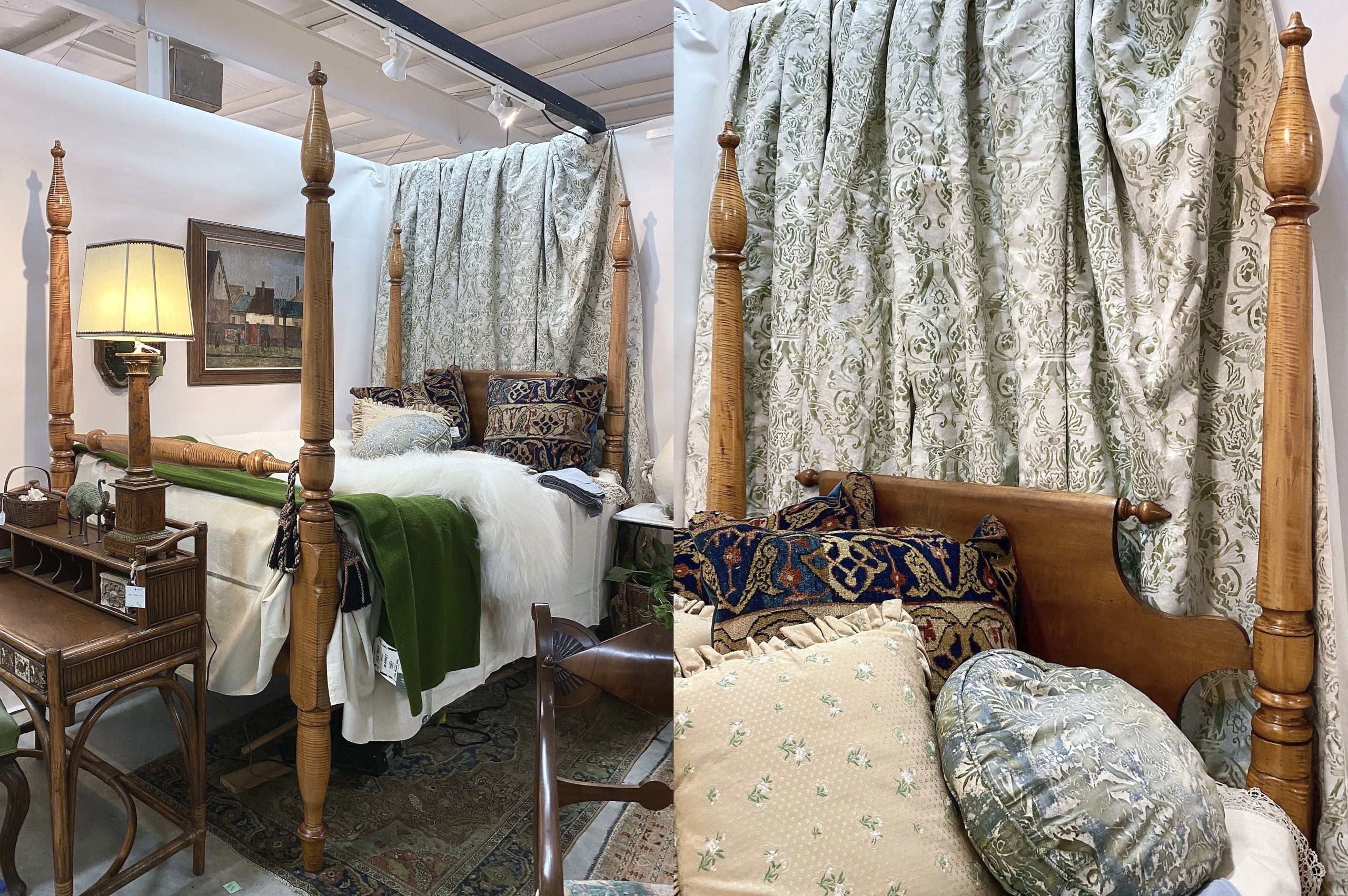
This unusual Nineteenth Century bed frame, made with turned birdseye maple in shapes made even more distinct by the wood’s light colors. Interiors with Provenance, Granite Point, Maine, and Park City, Utah.
The majority of objects at Rhinebeck were made to be used and are still fully functional today. Deb Gott of Interiors with Provenance, out of Maine and Utah, created a sleeping chamber with a shining bird’s-eye maple four-poster bed frame as the centerpiece. It was made in New England during the late Nineteenth Century, with an almost shield-shaped headboard and unusual finials. This and the bed’s boldly-turned posts and legs made it a unique sight that sold by the end of the weekend. A perhaps more humble but nonetheless interesting piece from the same era was a saddle seat stool from Pewter & Wood, Enfield, N.H. Saddle seats are more often seen on Windsor chairs, not on precariously small stool seats. It was from Vermont and showed old, possibly original support wires, and was spoken for at noon on Saturday.
Other booths offered less traditional, almost avant-garde furniture for those averse to brown furniture. Totally Bruce, Hudson, N.Y., had a corner cupboard that could have been mistaken for Bauhaus. The cupboard had two storage cabinets and shelves with dimensions that could only be custom made for a certain corner of a certain house. It was found in Buck’s County, Penn., and had wear consistent with its approximate date of early Twentieth Century make.
While shopping for our own homes, it’s easy to forget to feather our neighbors’ nests. Three Pennsylvania dealers including Ry Fillman Antiques, Spare Room and Affection Goods filled a large booth literally to its brim. Balancing on the structure’s edge was a huge, multi-chambered birdhouse that took all three business owners to place. It came from Quakertown, Penn., and was made by the grandfather of the man who sold it. The birdhouse was repaired and repainted every season and showed how much this man cared for his birds. Though it did not sell at Rhinebeck, a large painted cabinet that occupied half the booth space did. [The weekend] ended up being really successful,” said Fillman. “The booth did very well and received a lot of positive feedback from a handful of interior decorators, collectors and the promoters.”
Antiques at Rhinebeck is hosted at the Dutchess County Fairgrounds bi-annually; its Fall date is to be announced. For information, 914-474-8552 or www.barnstar.com.
